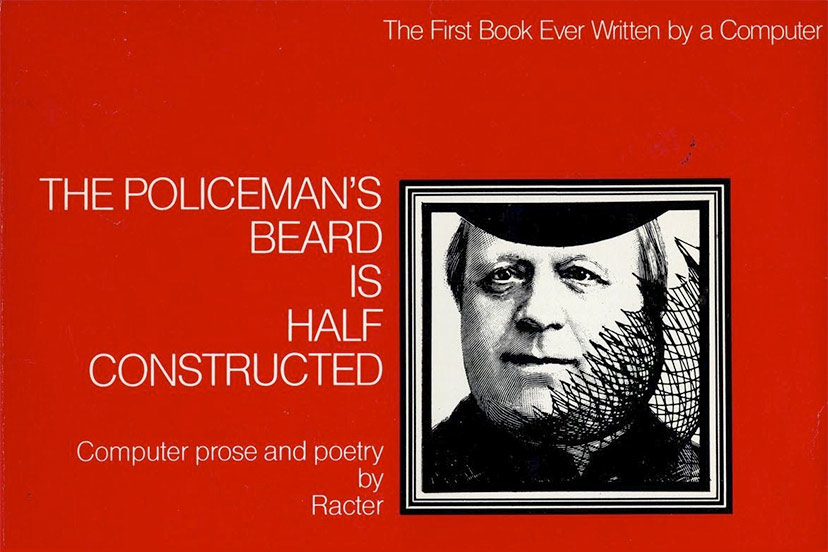Although I will sign my name to today’s column, I need to warn my readers that, due to budget issues here at the Pagosa Daily Post, this column — and future ‘Ready, Fire, Aim’ columns — will make use of AI, to save time and money.
It’s easier, nowadays, to hire a robot to write articles, than to find people willing to work. And apparently, most readers can’t tell the difference.
You might ask, why did it take so long? The first professionally-published book of poetry written by a computer algorithm, The Policeman’s Beard is Half Constructed, appeared in bookstores in 1984. The book’s cover states: “Computer prose and poetry by Racter.” But Racter wasn’t an author, in the normal sense of the word. However, he was willing to work for free, so long as he was plugged it.
The book he wrote is out of print, but you can purchase a used copy on Amazon for $3,301.74
Here’s one of the poems written by Racter. (The illustration is ‘human-derived’.)

A hot and torrid bloom which
Fans wise flames and begs to be
Redeemed by forces black and strong
Will now oppose my naked will
And force me into regions of despair
Not many modern American humans could have written this poem, for the simple reason that hardly anyone would ever use the word ‘torrid’ unless they were selling pornography. And very few sellers of pornography want to spend their time writing poetry. But if they did, they would happily use the word “naked”. It’s not immediately clear why Racter picked that particular word.
But even beyond the questions of vocabulary, even fewer modern humans would even want to write this poem. For example, what, exactly, is a “hot and torrid bloom”?
We humans wouldn’t mind, however, selling books we’d written for $3,300 a pop.
We can assume that Racter didn’t ‘want’ to write this poem, either. As far as science has been able to determine, the reality in which computers exist is completely devoid of feelings like ambition, desire, hunger, nostalgia, passion, or temptation. They do what we tell them to do, without complaint and without moral judgements. For that matter, they could care less whether they’re plugged in or not.
Does Racter care that copies of his out-of-print book is now selling for thousands of dollars? Not one bit. (I’m using the pronoun ‘his’ based on the generally masculine nature of his poetry, but we all understand that Racter is non-binary, gender-wise.)
Things have progressed since 1984. The latest big thing in computer-generated narratives is called GPT-3. (No relation to C3-PO of Star Wars fame.) Generative Pre-trained Transformer 3 is “an autoregressive language model that uses deep learning to produce human-like text.”
GPT-3’s full version has a capacity of 175 billion machine learning parameters, which is apparently equivalent to a PhD in English. Not that a PhD in English is especially valuable… and even less so now that GPT-3 has arrived.
From Wikipedia:
On May 28, 2020, an arXiv preprint by a group of 31 engineers and researchers at OpenAI described the development of GPT-3, a third-generation “state-of-the-art language model”. The team increased the capacity of GPT-3 by over two orders of magnitude from that of its predecessor, GPT-2, making GPT-3 the largest non-sparse language model to date…
An April 2022 review in The New York Times described GPT-3’s capabilities as being able to write original prose with fluency equivalent to that of a human. I’m assuming that the text, above, from Wikipedia, was written by GPT-3, because it doesn’t sound like something a human would write.
Fortunately, the programmers who created GPT-3 have been unable to endow it with a sense of humor, which is a great relief to robots like myself who will be paid to write humor columns in publications like the Daily Post. Whenever they get around to plugging us in.
Underrated writer Louis Cannon grew up in the vast American West, although his ex-wife, given the slightest opportunity, will deny that he ever grew up at all. You can read more stories on his Substack account.

